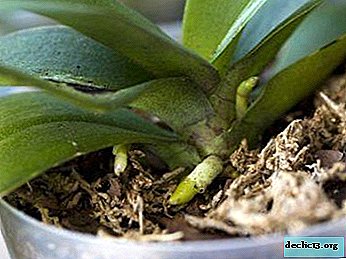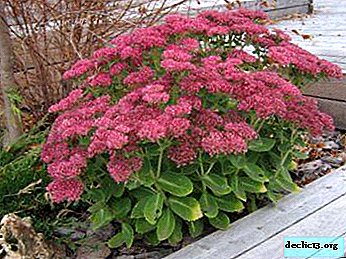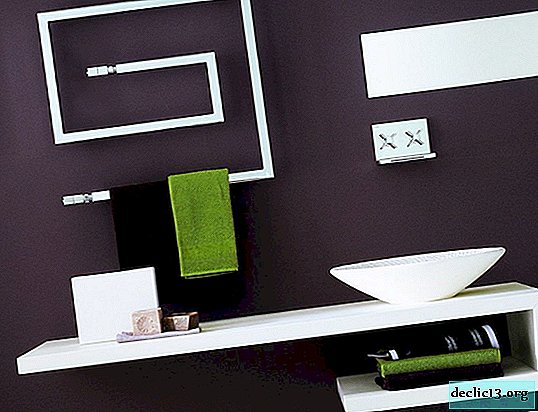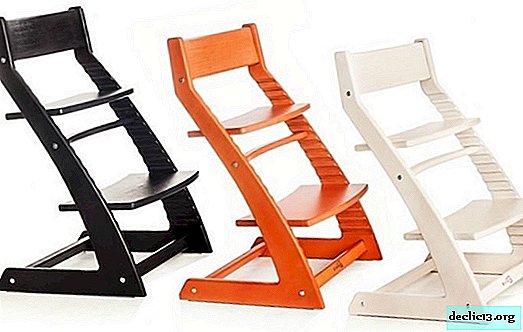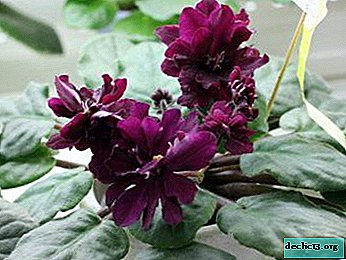Why spathiphyllum lowered the leaves, how to determine the cause and what to do to eliminate it?

Snow-white spathiphyllum is a great decoration for any modern interior. According to bioenergy, this plant improves the emotional atmosphere in the house, a delicate aroma contributes to a positive mood, and helps single women find their soul mate.
But always in the process of growth of indoor exotics, it happens that suddenly a flower lowers the leaves. We will further analyze how to understand why the “Feminine Happiness” flower has dropped leaves and what to do if it does not pick it up.
Why did the foliage fall?
It is unlikely that spathiphyllum can be attributed to whimsical or capricious plants. But it happens that during the growing process, difficulties arise mainly related to the care of a room flower. These problems are temporary, and quite solvable. These include:
- inappropriate flowerpot;
- hypothermia;
- wrong soil composition;
- incorrectly selected irrigation regime;
- low humidity;
- fungal or bacterial infections;
- harmful insects.
How to determine the cause?
Among many indoor plants, it is in spathiphyllum, it is easy to diagnose the cause of the disease in appearance. They are characterized by color changes of foliage and petioles.
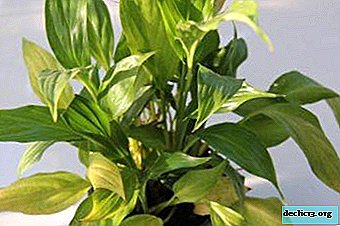 If the foliage of the plant turns yellow, turgor worsens, and the soil is covered with a dry crust - this is a clear symptom of a lack of fluid. It is also easy to see how old leaves dry and fall off, and new processes lose their natural shine.
If the foliage of the plant turns yellow, turgor worsens, and the soil is covered with a dry crust - this is a clear symptom of a lack of fluid. It is also easy to see how old leaves dry and fall off, and new processes lose their natural shine.- If the leaves suddenly changed their usual state, leaned down, a dark green hue appeared. Perhaps this happened due to hypothermia of the plant. When, after spraying or a warm shower, a window was opened and cold air entered the room.
- Flabby leaves and dry tips indicate dry indoor air.
- The appearance of dark patches with a gray shaggy coating on leaves, stems, and soil is a symptom of the development of fungal diseases, in particular, rot varieties.
- If the leaves curl, lean down, a thin cobweb is visible on them, it means that your plant has neighbors, namely harmful insects. They are often located on the underside and are easily visible upon visual inspection.
What to do in each case?
So, according to the symptoms, you understand why the flower has drooping foliage. What to do next? How to help restore the lost state of spathiphyllum?
Incorrect soil mix
An improperly selected soil or flower pot can lead to such consequences:
- The soil should be well-drained. A layer of expanded clay or broken brick should be laid at the bottom with a layer 2 cm thick.
- A heavy, clogged, acidic environment negatively affects the condition of the flower.
- Soil that does not have good hygroscopicity, insufficient penetration of air and moisture, is also not suitable for spathiphyllum.
- The size of the pot should correspond to the dimensions of the flower.
How to help:
- After watering, check how wet the soil is, what its structure is.
- If the substrate does not fit the specified parameters and has the above disadvantages, it is worth changing.
- Transplant indoor exotics into a light, loose, mineralized substrate.
Excess moisture
Spathiphyllum is considered a "waterbread" among indoor flowers. But stagnation of water does not tolerate. After all, this causes problems with the roots, which are constantly in the wet substrate, as a result, the process of decay occurs. Find out if there are problems with the roots: if after watering over time the moisture did not absorb, then the root system is not able to absorb it. Deterioration of the condition of the roots, respectively, is reflected in the leaves.
How to help:
 Extract the plant from the pot, analyze the root system.
Extract the plant from the pot, analyze the root system.- Rinse the roots under running warm water.
- Use a sharp knife to remove rotten, dry, inanimate roots.
- Disinfect slices with crushed activated carbon.
- Let them dry.
- As a prophylaxis of fungal diseases, treat the roots with a weakly concentrated solution of Maxim.
- Transplant the flower into a new dry soil, with a mandatory drainage layer.
- Watering immediately after transplantation is not necessary.
- In the future, normalize the irrigation system.
- After moisturizing, drain the water from the pan in which the flower pot stands.
Root problems
The withering of the green mass of spathiphyllum indicates possible diseases of the root system. There are 3 periods of the disease. It is difficult for non-experienced gardeners to immediately determine the stage of the disease. To do this, pull the plant by the stem, trying to pull it out. If this is difficult to do, then the problem is not in the roots.
This condition of a houseplant can be restored by adjusting the care. If the flower does not stay in the pot at all, it’s more difficult. Perhaps there is nothing to be done.
How to help:
- Take the measures described in paragraph above.
- Treat the root system with potent fungicides.
- Transplant and wait for the result.
Drying out the soil
Oddly enough, dry soil is one of the most common mistakes. Lack of moisture and, therefore, nutrients provokes wilting - loss of leaf turgor, sluggish stem. In the case of spathiphyllum, one should not forget about hydration, and do not wait until the soil in the flowerpot is completely dry, otherwise such actions lead to wilted leaves.
How to help:
 First of all, you should check how wet the soil is after wetting, if it is in the soil, you need a change of substrate.
First of all, you should check how wet the soil is after wetting, if it is in the soil, you need a change of substrate.- The flower, along with the pot, is placed in a container of water.
- Wait until the soil is completely wet until the roots are saturated with water for about 15-20 minutes.
- At the same time, you can arrange a warm shower for the leaves.
- After, give the plant time to dry.
- Monitor the frequency of watering.
Incorrect conditions
Adverse microclimate parameters in the room can provoke drooping leaves in spathiphyllum. These include:
- location;
- temperature;
- humidity.
An improperly selected place, for example, a cold window sill with frequent blowing of outside air, drafts, will play a cruel joke with a heat-loving flower. Room exot should be in a warm room, but away from radiators.
Important! Sudden changes in temperature - an extremely negative phenomenon for the leaves. It is also necessary to monitor the level of humidity in the room.How to help: the required parameters in the room should be brought back to normal.
How to prevent the recurrence of problems?
Despite the apparent difficulties, it is easy to care for the spathiphyllum.
- To begin with, it is important to determine the permanent location of the flower. It is better to choose a window sill from the east or west side, if possible far from drafts, cold air.
- Monitor the state of the soil, perform a plant transplant at least 1 time in 2-3 years. Thus, eliminate soil depletion and compaction. More often the procedure is not worth doing, the exception is only a young exot up to 3 years.
- Do not forget about regular watering.
- Humidify indoor air with a household appliance.
Spathiphyllum has a lot of reasons associated with dropped leaves, but not all of them are serious. If you eliminate them at an early stage, then subsequently no treatment will follow. But if the option is fuzzy, then nothing will save. Do not bring the plant to such a state, take care of it and spend more time.

 If the foliage of the plant turns yellow, turgor worsens, and the soil is covered with a dry crust - this is a clear symptom of a lack of fluid. It is also easy to see how old leaves dry and fall off, and new processes lose their natural shine.
If the foliage of the plant turns yellow, turgor worsens, and the soil is covered with a dry crust - this is a clear symptom of a lack of fluid. It is also easy to see how old leaves dry and fall off, and new processes lose their natural shine. Extract the plant from the pot, analyze the root system.
Extract the plant from the pot, analyze the root system. First of all, you should check how wet the soil is after wetting, if it is in the soil, you need a change of substrate.
First of all, you should check how wet the soil is after wetting, if it is in the soil, you need a change of substrate.